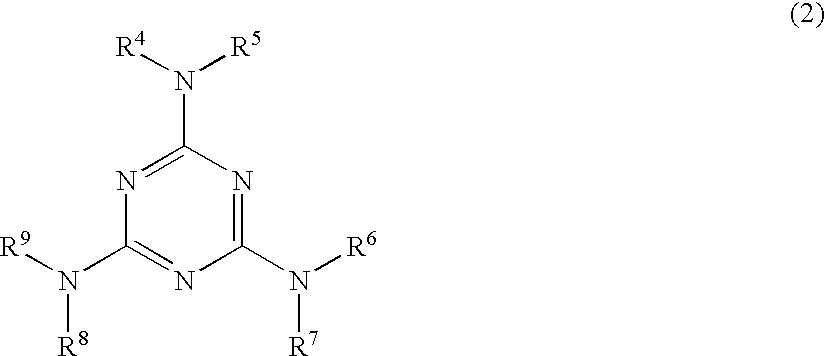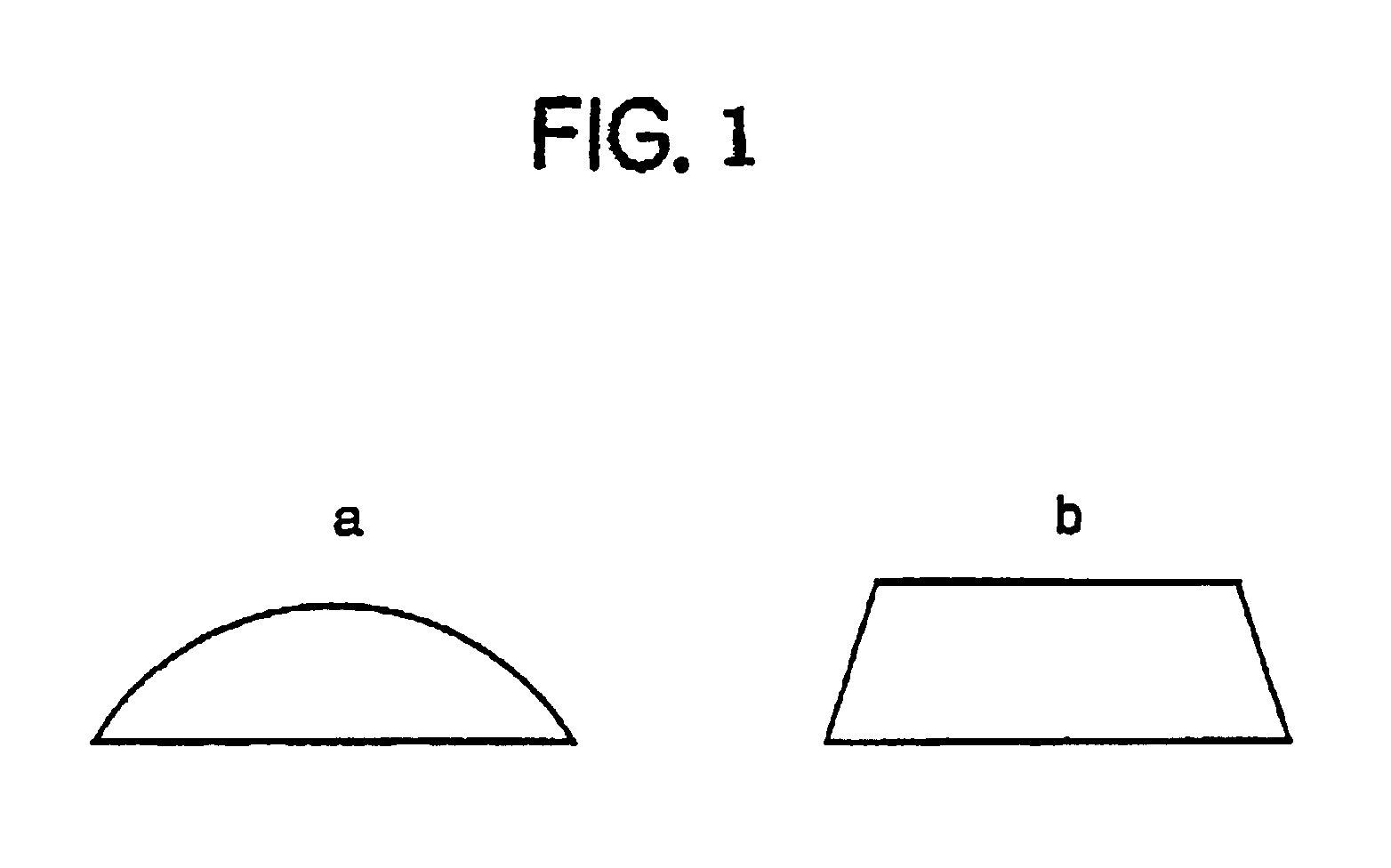Radiation-sensitive composition, insulating film and organic EL display element
a technology of insulating film and composition, applied in the direction of photosensitive materials, instruments, photomechanical equipment, etc., can solve the problems of insulating film promoting corrosion by acid, material readily undergoes a structural change, emission failure,
- Summary
- Abstract
- Description
- Claims
- Application Information
AI Technical Summary
Benefits of technology
Problems solved by technology
Method used
Image
Examples
synthesis example 1
of Alkali-Soluble Resin (Novolak Resin)
After 57 g (0.6 mol) of metacresol, 38 g (0.4 mol) of paracresol, 75.5 g of a 37 wt % aqueous solution of formaldehyde (corresponding to 0.93 mol of formaldehyde), 0.95 g (0.005 mol) of p-toluenesulfonic acid monohydrate and 264 g of methylisobutyl ketone were fed to a 1-liter stainless steel (SUS316L) flask equipped with a cooling tube, stirrer and thermometer, the flask was immersed in an oil bath to carry out polycondensation under agitation at 130.degree. C. for 4 hours while the reaction solution was refluxed.
The temperature of the oil bath was then elevated to 180.degree. C. over 3 hours, the inside pressure of the flask was reduced to 30 mmHg to remove volatile matter, and the molten resin was collected by cooling to room temperature. After this resin was dissolved in ethyl acetate to a resin content of 30%, methanol and water were added to this solution in amounts 1.3 times and 0.9 time the weight of the solution, respectively, stirred ...
synthesis example 2
of Alkali-Soluble Resin (Novolak Resin)
After 76 g (0.8 mol) of metacresol, 13.9 g (0.12 mol) of 2,3-xylenol, 9.3 g (0.08 mol) of 3,4-xylenol, 78 g of a 37 wt % aqueous solution of formaldehyde (corresponding to 0.96 mol of formaldehyde), 0.95 g (0.005 mol) of p-toluenesulfonicacidmonohydrate and 264 g of methylisobutyl ketone were fed to a 1-liter stainless steel (SUS316L) flask equipped with a cooling tube, stirrer and thermometer, the flask was immersed in an oil bath to carry out polycondensation under agitation for 4 hours while the reaction solution was refluxed.
The temperature of the oil bath was then elevated to 180.degree. C. over 3 hours, the inside pressure of the flask was reduced to 30 mmHg to remove volatile matter, and the molten resin was collected by cooling to room temperature. After this resin was dissolved in ethyl acetate to a resin content of 30%, methanol and water were added to this solution in amounts 1.3 times and 0.9 time the weight of the solution, respect...
synthesis example 3
of Alkali-Soluble Resin (Novolak Resin)
After 54.07 g (0.50 mol) of metacresol, 54.07 g (0.50 mol) of paracresol, 71 g of a 37 wt % aqueous solution of formaldehyde (corresponding to 0.88 mol of formaldehyde) and 6.3 g (0.05 mol) of oxalic acid dihydrate were fed to a 1-liter flask equipped with a stirrer and thermometer, the flask was immersed in an oil bath to carry out a polycondensation reaction for 120 minutes under agitation while the inside temperature of the flask was maintained at 100.degree. C. After the temperature of the oil bath was elevated to 180.degree. C. and the inside pressure of the flask was reduced to 30 mmHg to remove volatile matter, the molten resin 3 was collected by cooling to room temperature. The resin 3 had a weight average molecular weight (Mw) of 8,800.
PUM
| Property | Measurement | Unit |
|---|---|---|
| temperature | aaaaa | aaaaa |
| temperature | aaaaa | aaaaa |
| opening diameter | aaaaa | aaaaa |
Abstract
Description
Claims
Application Information
 Login to View More
Login to View More - R&D
- Intellectual Property
- Life Sciences
- Materials
- Tech Scout
- Unparalleled Data Quality
- Higher Quality Content
- 60% Fewer Hallucinations
Browse by: Latest US Patents, China's latest patents, Technical Efficacy Thesaurus, Application Domain, Technology Topic, Popular Technical Reports.
© 2025 PatSnap. All rights reserved.Legal|Privacy policy|Modern Slavery Act Transparency Statement|Sitemap|About US| Contact US: help@patsnap.com



